
Comprehensive guide to Risk Management: How to never lose trading account
When people start to learn about trading, risk and trade management is the last thing they care about.
It might also be the reason why over 90% of traders lose money.
Also, online resources about risk management can oftentimes be pretty vague.
“Don’t risk more than x % per trade.”
Although this can be good advice, everyone is trading different at different frequencies, markets, timeframes, etc.
This is why there is rarely a universal answer to proper risk management, and this topic needs to be explored a little further.
Besides risk management, I will also talk about managing your trades and trade preparation; as this blog was always very much focused on technical trading, I feel like it’s time to talk about something else than just charts.
If you like this article, read the rest of the blog or join the Tradingriot Bootcamp for a comprehensive video course, access to private discord and regular updates.
For those who are looking for a new place for trading crypto, make sure to check out Woo. If you register using this link and open your first trade, you will get a Tier 1 fee upgrade for the first 30 days, and we will split commissions 50/50, which means you will get 20% of all your commissions back for a lifetime. On top of that, you will receive a 20% discount for Tradingriot Bootcamp and 100% free access to Tradingriot Blueprint.
Table of Contents
Comprehensive guide to Risk Management
Why manage risk?
When you are newer to trading, you start learning all different strategies, and it is very easy to feel like you have solved the market.
The financial markets are place where you will have to compete against the most intelligent traders and algorithms, so the likelihood that one strategy you have learnt from youtube will significantly outperform the market is very small.
You can never tell that the market reached a certain level because the x indicator did this or moved to this resistance because it hit that support earlier.
Especially those focusing on swing trading are more often than not riding moves based on fundamentals instead of crossover of two moving averages, which they use as reasoning for the move.
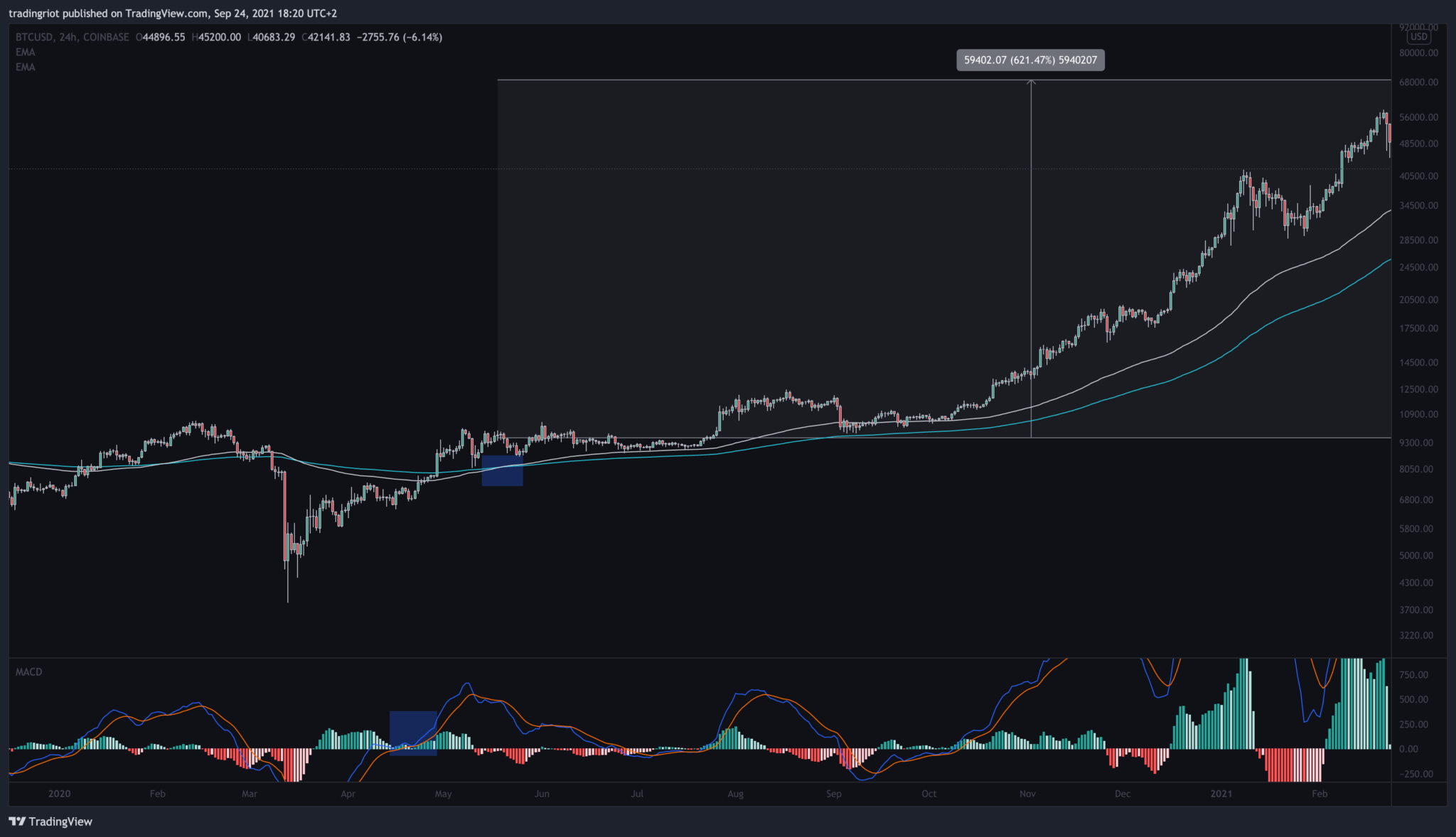
Did Bitcoin rally from $10,000 to $60,000 because of the moving average crossover or crossover on MACD?
Of course not. But being able to spot these patterns can give you an edge in the market.
Your edge can be anything; you can use simple or more sophisticated indicators, pure price action, analyzing option chains, trading based on macroeconomic releases and so on.
The point is, your edge gives you a positive expected value (EV+)
Expected value simply represents average results over a number of trades.
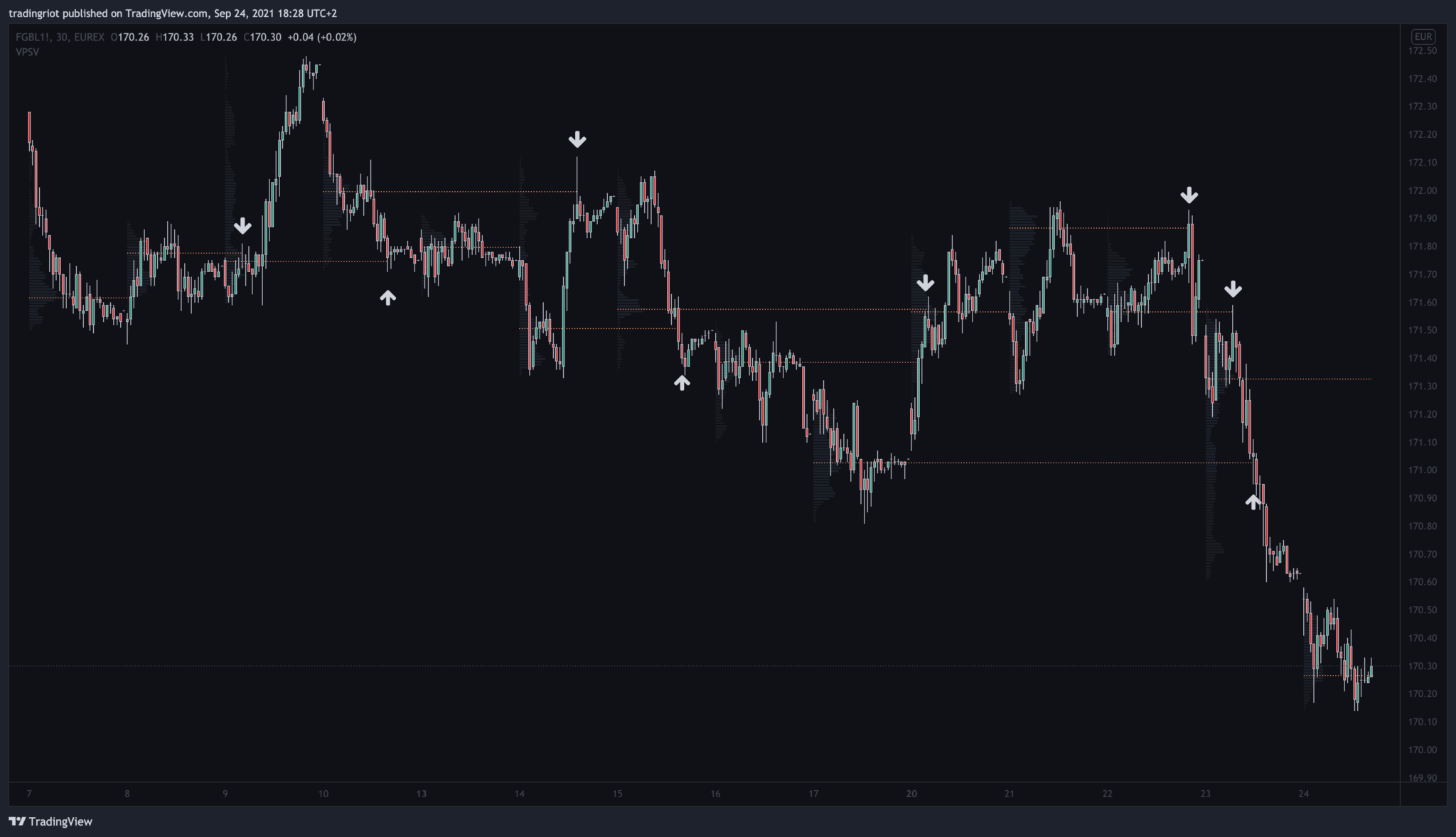
If you look at this chart of 10-year German Bond over the last couple of weeks, you can see that market reacted when it touched the naked Volume point of control from prior sessions on most occasions.
Of course, this can be your edge; I wouldn’t use it as simple as that, but you can see this as a repeated pattern, and the market tends to react when it happens.
Also, if you don’t know what Naked Point of Control is, make sure to read this article about volume profile trading.
Although you cannot “solve” the market, you can develop a strategy that exploits certain behaviours that work more often than not.
Combining that with proper risk management makes you stay in the trading game for the long run.
Risk Management basics
Two factors are considered the basics of risk management.
Risk per trade and R.
Risk per trade is simply a $ or % amount you risk per each trade.
The risk to reward ratio tells you how much you are risking in comparison to your reward.
For example, a strategy with a 1:2 risk to reward ratio (also known as 2R) tells you that for 1 unit of risk, you will have two units of reward.
In a practical example, entering a long on Bitcoin at $42,250 with a stop-loss at $40,250 and take profit at $46,250 would result in trade with risk to reward of 1:2 as your stop-loss is $2,000 from entry price and your take profit is
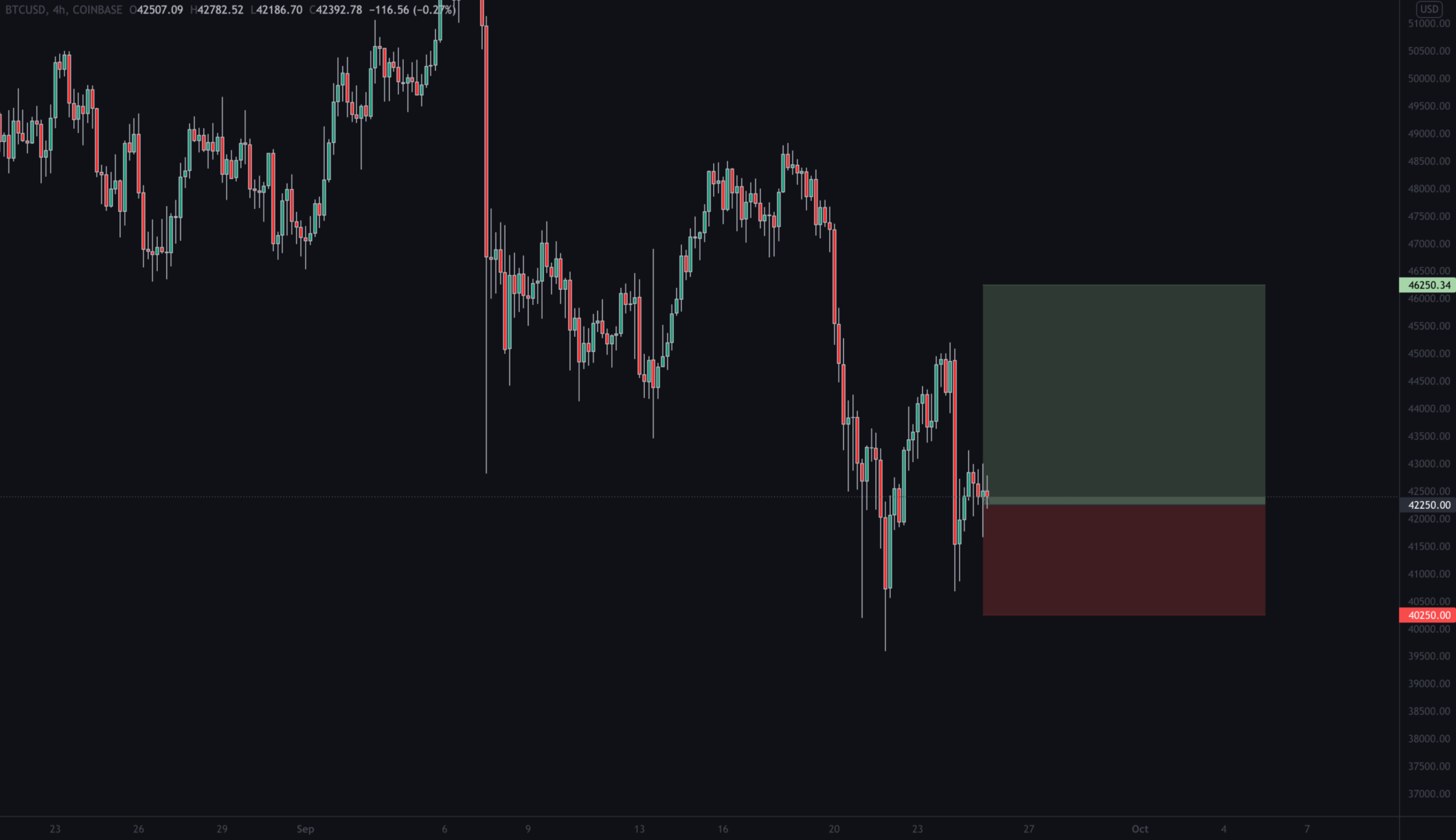
Most conventional wisdom says you should not risk more than 2-5% of your whole account balance per trade.
Although this is not false, it’s much more complex than this and I will talk about this more throughout this article.
Let’s say you have $10,000 in your trading account and come across a string of 8 consecutive losses.
If you think having eight losses in a low is unrealistic, let’s take a look at this table that shows a probability of having consecutive losses within 50 trades based on the % strike rate of strategy.
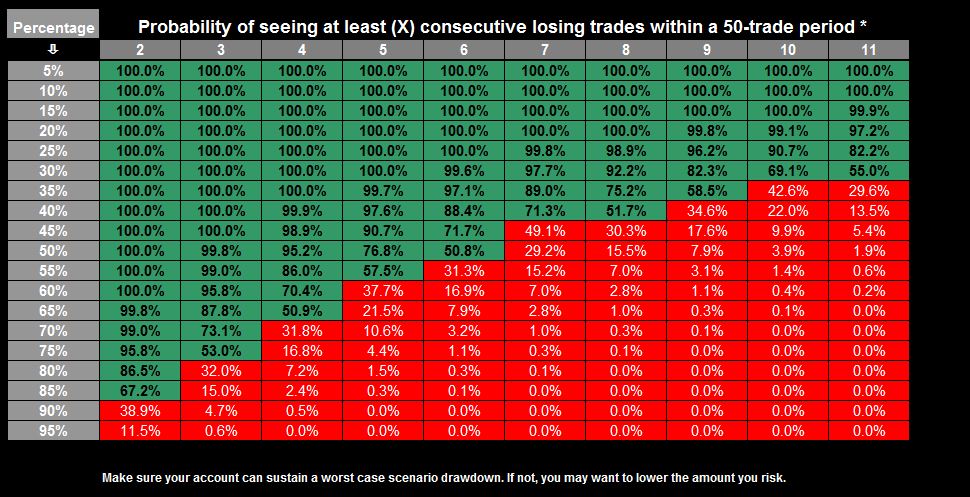
Source: Tom Dante via Twitter
As you can see, a strategy with a 50% win rate has an approximately 50% chance of having eight consecutive losses in a row.
Although having eight consecutive losses in a row seems like a lot and can bring some psychological burden, it does not mean that strategy is not profitable.
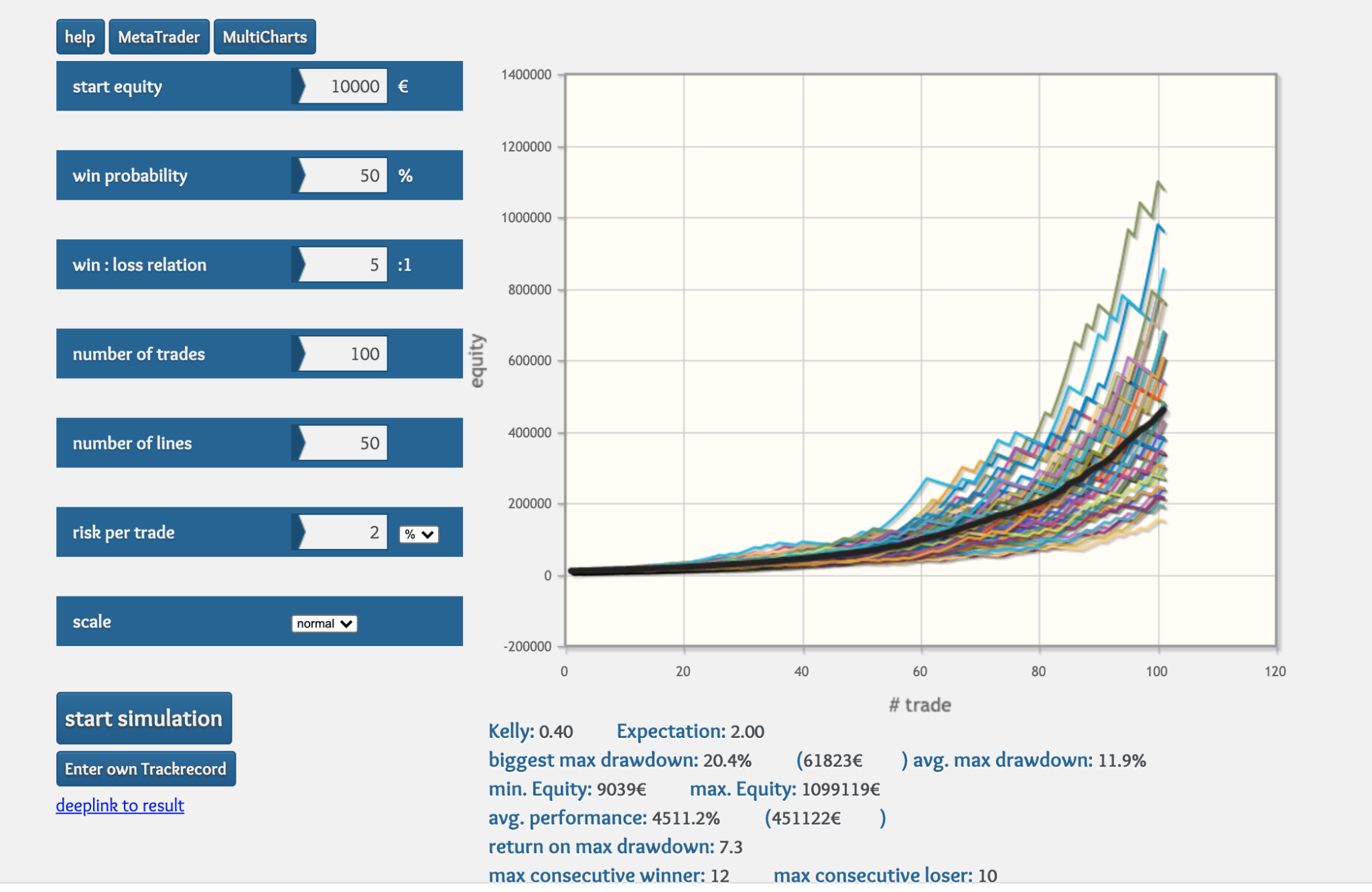
Source: Equitycurvesimulator
As you can see from this equity simulation, out of 50 random simulations with 100 trades using the strategy with 50% win rate and fixed 2R per trade, there is not a single simulation that would end up in a loss using a fixed 2% per risk on every single trade.
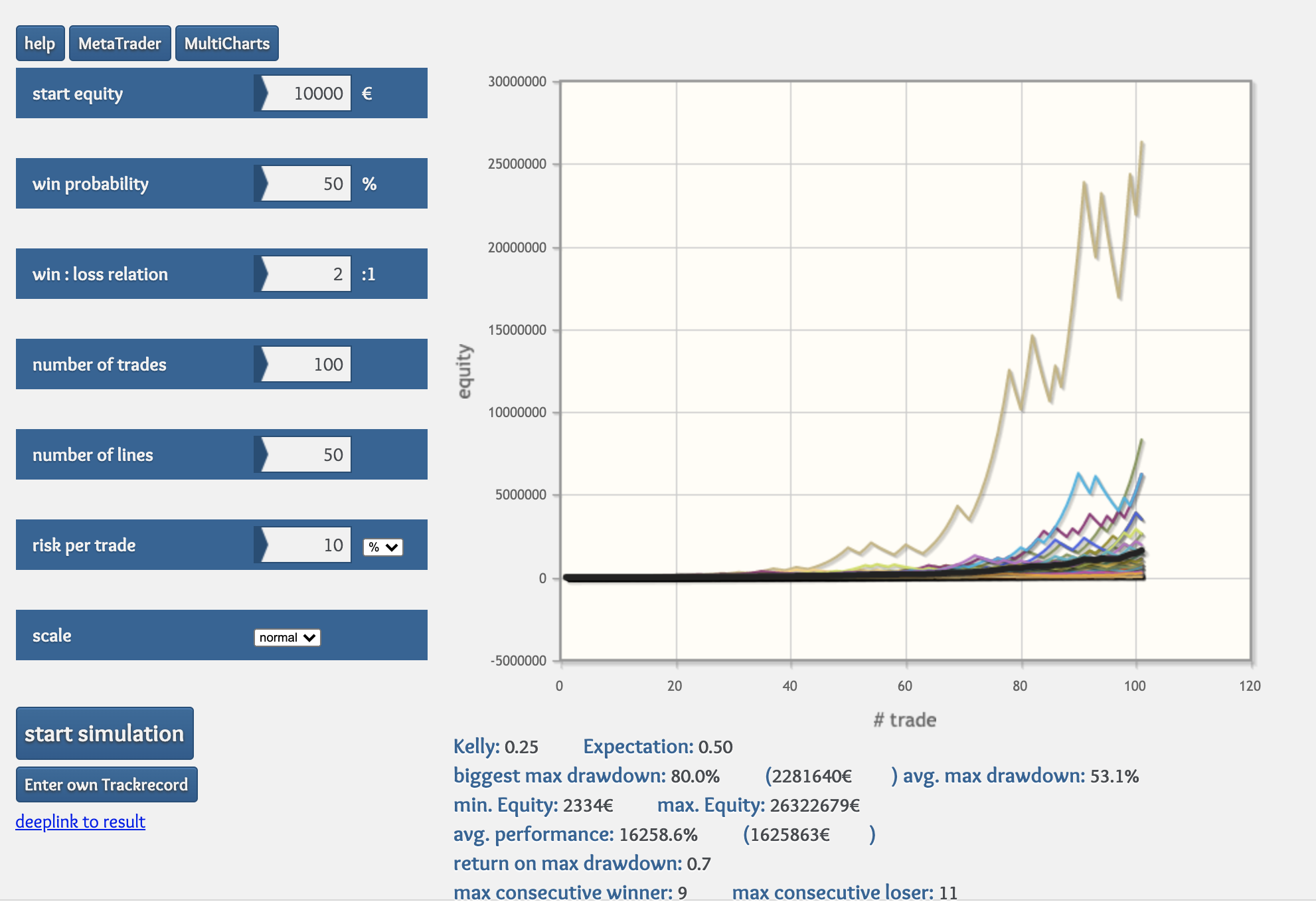
Source: Equitycurvesimulator
Now, look at the same simulation with 10% risk per trade.
Risking 10% per trade is almost unspeakable in the trading industry as every mentor/educator tells you it’s just simply too much, but is it?
As you can see, some of their equity curves reach astronomical numbers, but also, there are 11 max consecutive losses; hitting these at the start of your run would mean blowing up your account.
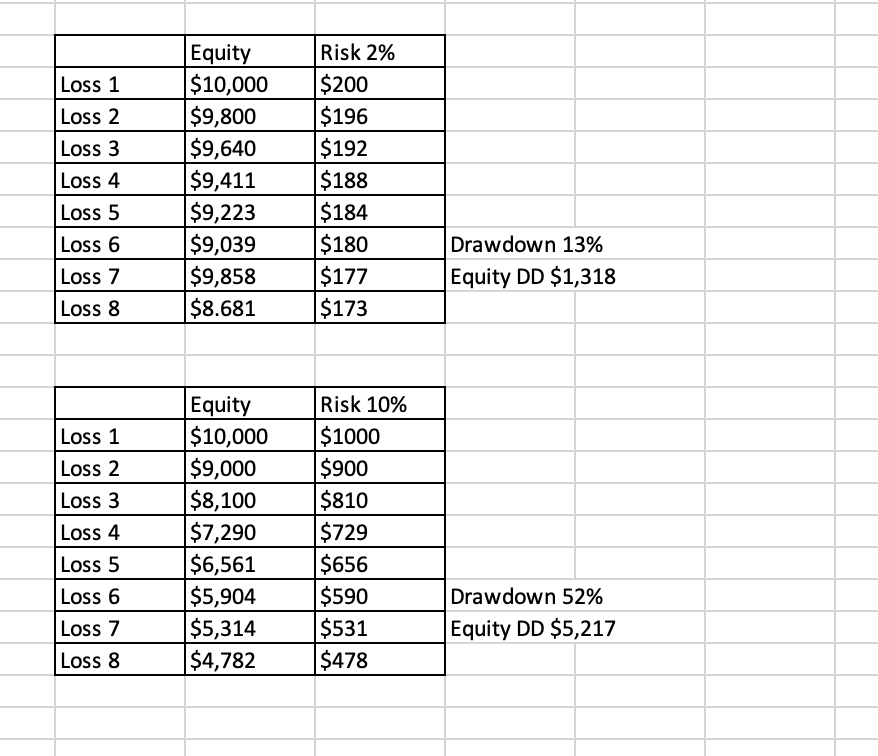
As you can see, risking 10% of your account from the start would get you to a 52% drawdown at eight consecutive losses.
That is something many people would not be able to stomach, but for certain traders risking 10% per trade is still a viable option.
Also, summarize the basics of risk management; here is a useful infographic from Edgewonk.
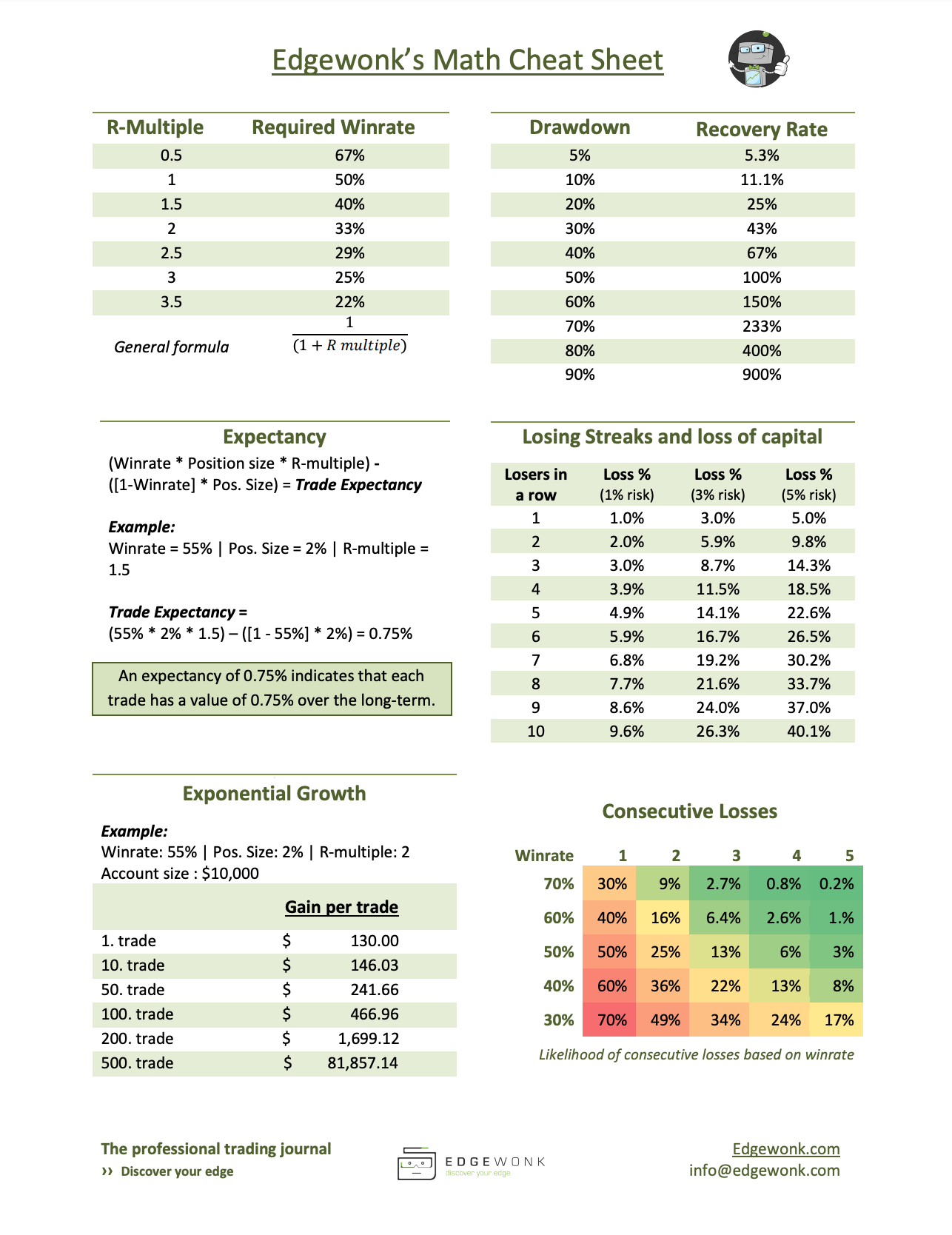
A different approach for different trading styles
We are all trade different based on our strategies, beliefs and time capabilities.
Some people take 50 trades a day scalping ticks at DOM, but some don’t take 50 trades in a whole year.
I average around 1-3 trades each day in what I consider to be intraday swing trading, and I talk about it more at the blog and Trading Blueprint.
Does it make sense for me to risk 10% per trade? Not really, as hitting my daily loss limit, which I set to be at three losses in a row, is not unlikely to happen at least once in a week or two.
Leaving your desk with an account being down 30% is not great compared to being down 3-6%; of course, that’s not great as well but much easier to stomach.
This is why it is important to know your strategy and how many trades you are about to take on average each day/week/month, and so on.
If you are a swing trader, take one to three trades a week; risking 2-3% per trade is completely fine.
If you take only one to three trades each month, you can risk 5-10% without a problem.
Because of this, it can be tricky following conventional wisdom you read about online of never risking more than 2% per trade and so on.
You need to know your expectations from the market, how active you will be and how much you are willing to risk compared to how frequent you will be trading.
For example, you have $100,000 on your trading account, but you only take three trades each month on average.
Does it make sense to strictly sticking to 1% risk per trade, or should you rather look into your performance and adjust risk to maybe 3-5% based on your data equity simulations? I think the latter is a better choice.
Opposite to this would be someone who is day trading and is in and out from trades quick.
Daytraders and scalpers need to consider additional costs such as commissions and a much higher likelihood of slippage.
Because of that, there is no reason to go crazy with your risk, as anything between 0,5-2% per trade is more than enough.
Using a stop-loss
“Stop-loss is traders best friend; you should always use a stop-loss.”
This is something you will hear often, but it is also not completely true.
Stop loss will take you out from the trade at one predetermined price; once that price level hits, your trade is realized at a loss.
This can often lead to situations looking like this.

But how what is the way from this?
The big advantage of using a hard stop-loss is that you can easily calculate your position size to fit your risk parameters, and also you will get straightforward data when journaling your trades.
This is why I always recommend those that are new to trading to use hard stops.
Once you get more experienced, you will come across basically two scenarios where you might not want to use a hard stop.
First of all, I feel it’s necessary to mention again that you need to have experience with the market and trading; if you are new to trading, just skip to the next chapter.
From my experience, trading without a hard stop is usually done with swing/position trades.
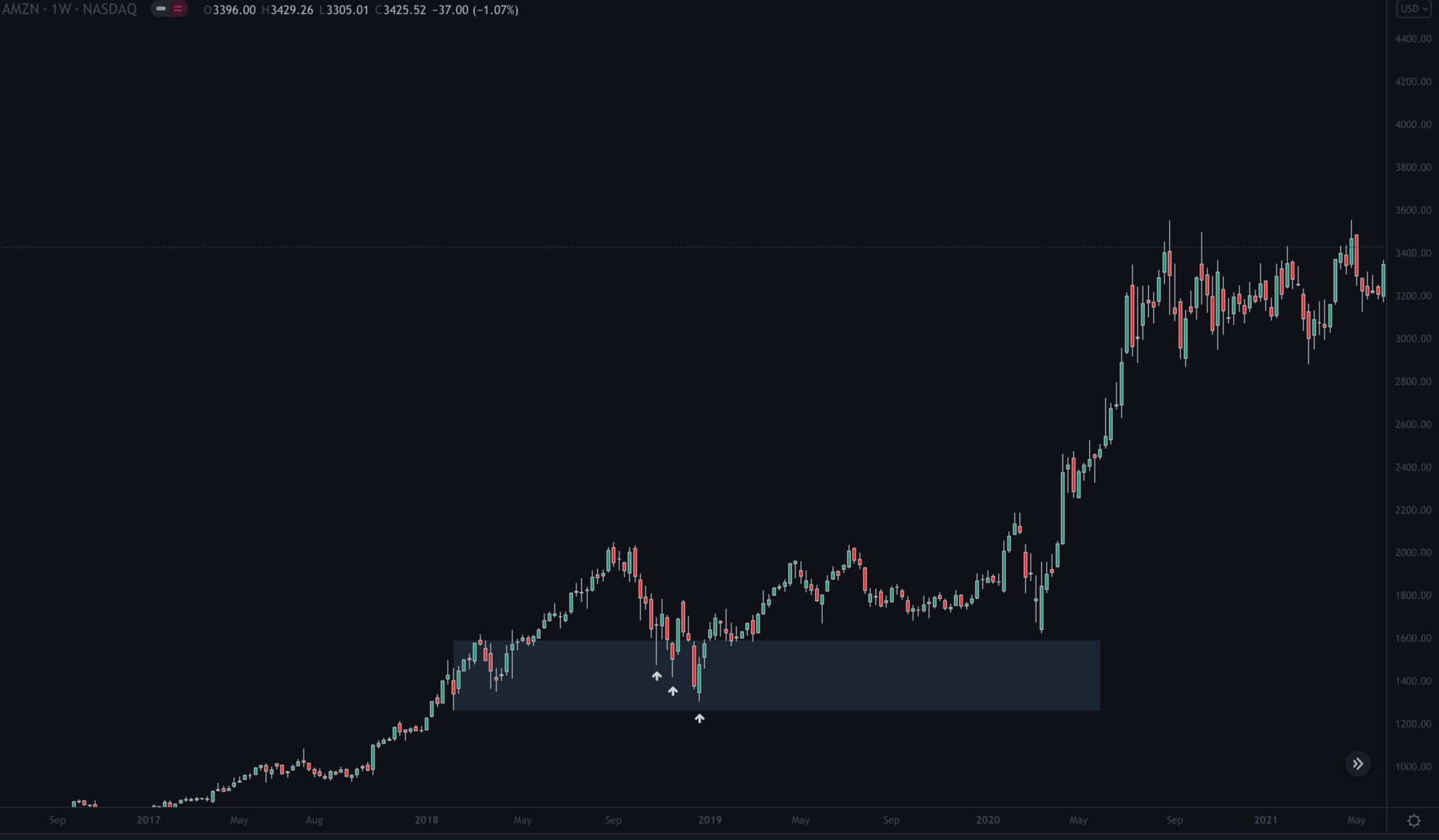
If you were bullish on Amazon in 2018-2019 for whatever reasons and you wanted to build up a position inside the blue box, you could find it very hard to time the market at the exact bottom in this weekly chart.
Especially after the first rejection weekly candle, you indicate a continuation higher but instead led to lower prices, and most likely a stop-loss triggered.
What a lot of traders/investors do instead is they average down inside their position and keep buying until the price hit their predetermined level, where they know they are wrong on the trade.
Although they might not have a hard stop there, they might start to scale out of the trade and liquidate the position.
There are many ways of doing this, but you will generally see this approach with traders that don’t care too much about timing the market and rather scale into their positions using multiple orders.
The second practice is using a soft and hard stop-loss, which is much more suited toward short-term trading. It is also something I do from time to time, usually when I have a higher timeframe bias and executing a trade on a lower timeframe.
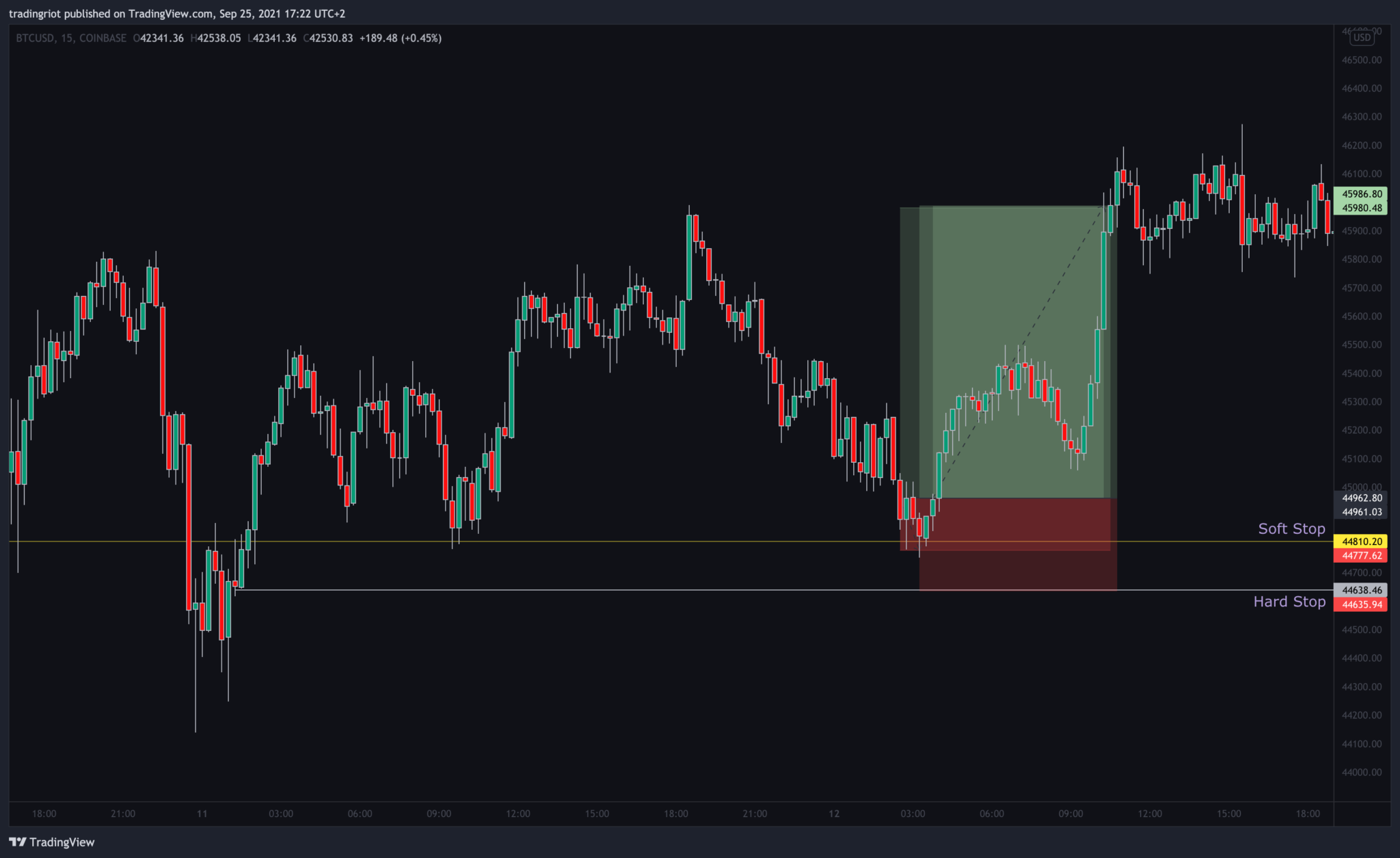
As you can see on this Bitcoin 15-minute chart, you might want to get long if the market makes a false break (wick below, close above) prior swing low at support.
Once you enter the trade, you don’t want to see a new low that would invalidate your trade, but you also want to trade just a little room to move.
If you look below the market, you can identify another level of structure that might be around twice the distance from your original stop, which is, in this case, low of the candle you used for entry.
If you put your stop loss at the hard stop level, the risk to reward for this trade will be three if the market reaches a new high.
If you put your stop loss at the soft stop level, the risk to reward will be over 5.5.
Suppose you have enough experience and know from journaling your trades that the market shouldn’t go to your stop loss, but in 20% cases, it can wick once more before moving higher. In that case, you can go to lower timeframes where you might set a rule for manually exiting at your soft stop level.
For example, if a 3-minute candle closes below to low.
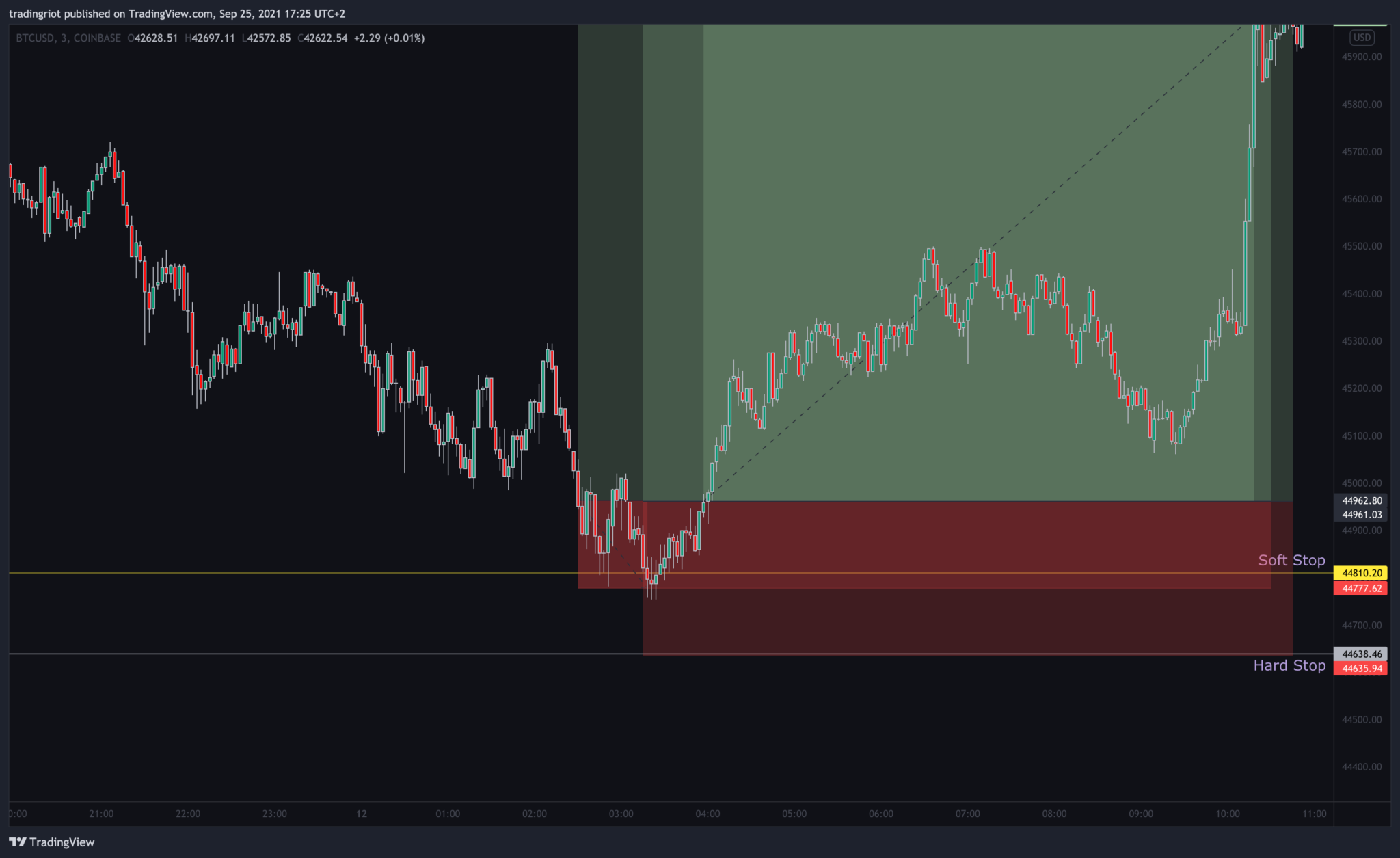
As you can see, the market went to the low again but could not close below and eventually rallied higher.
If you put your hard stop at the low, it would result in a painful stop before seeing the market go to your desired take profit level.
So this is the case when you might want to experiment with using a soft stop and hard stop.
Of course, if the market just smashes lower and hit your hard stop, you would lose more money.
This is why there should be a set amount of rules.
First of all, this is only for those with some experience and those who know their setups through observing or journaling and knowing the markets they trade.
When I use this approach, I follow the simple rule that a hard stop cannot be more than double of distance from the soft stop.
In other words, if I usually risk 1% per trade and the market would smash quickly to my hard stop, I cannot lose more than 2% on the trade.
Once again, I don’t do this with every trade, only those when I might have either higher timeframe bias of bigger move or I am entering in times of lower liquidity so that some shakeout moves can be expected.
In this section, I just wanted to show you a different angle of the “you always must use hard stop-loss” point of view often presented online.
As I said, those new to trading should instantly forget about it and only revisit these concepts when they have enough experience/data to back their decision.
Partial Profits
“Closed half here, moving my stop at breakeven and letting rest run risk-free!”
I am very sure you have read this somewhere before.
People love to take partial profits as they feel like they took something from the market, and now they are not exposed to any risk.
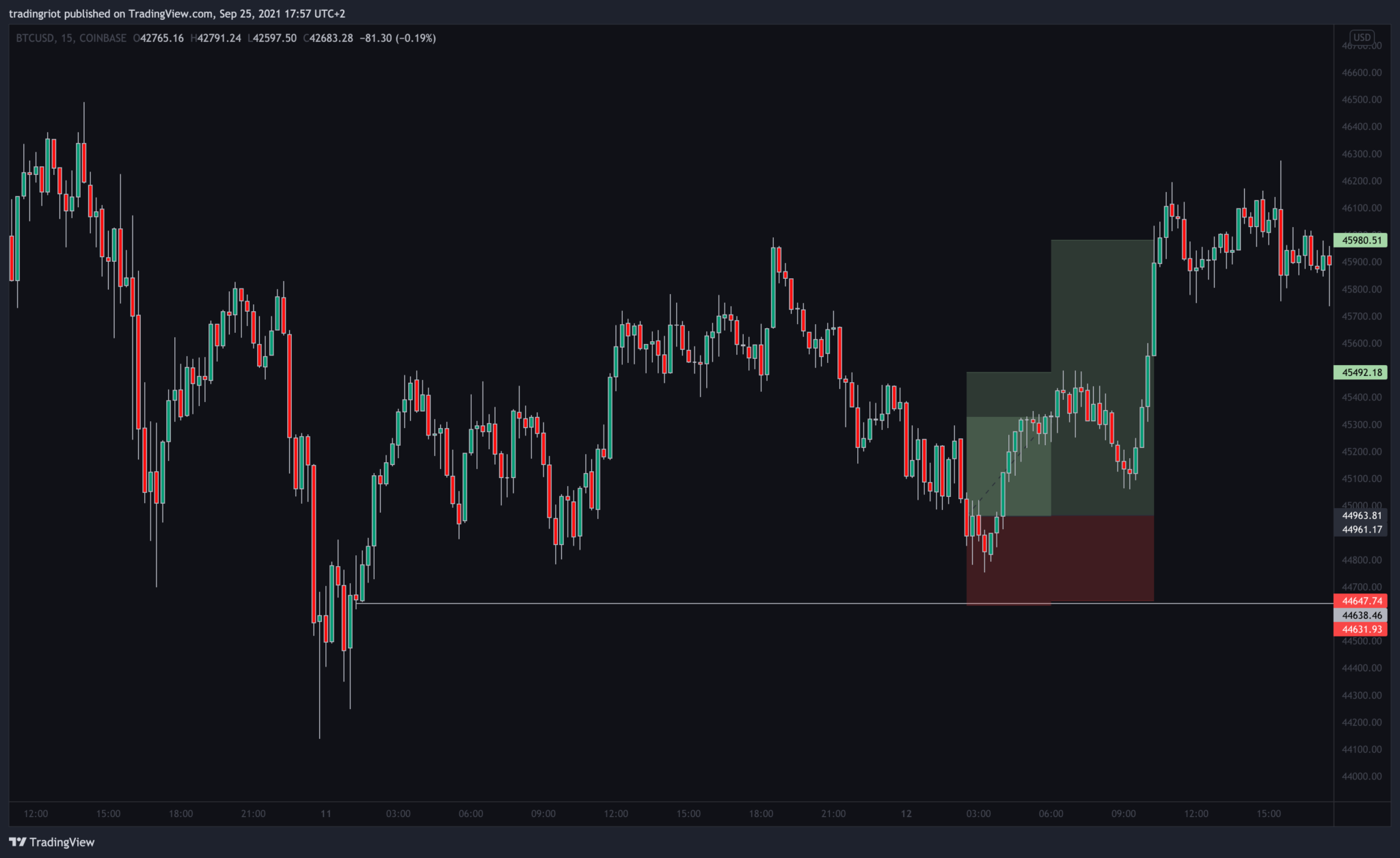
Using the same trade as in the previous example, you can see profit-taking is split into two parts.
The first part would be close at 1.5R and the second at 3R.
Let’s break this down a little bit.
First of all, let’s consider that you would not use partial take profits and closed trade full at 3R.
If you risked $300 on this trade, you would make a profit of $900.
But if you split your take profit like this into two parts, you would only end up with $675.
You can view this as taking two separate positions of $150 risk. The first one is closed for $225 profit (1.5R) and the second one for $450 profit (3R).
Compared to the all-out, all-in approach, this would cost you approximately 0.7R on this trade.
Of course, contrary to that, if you would close only half of the position and then the market would turn on you, it would result in a smaller loss, but more often than not, taking partial profits only offers us comfort and is not beneficial in the long run.
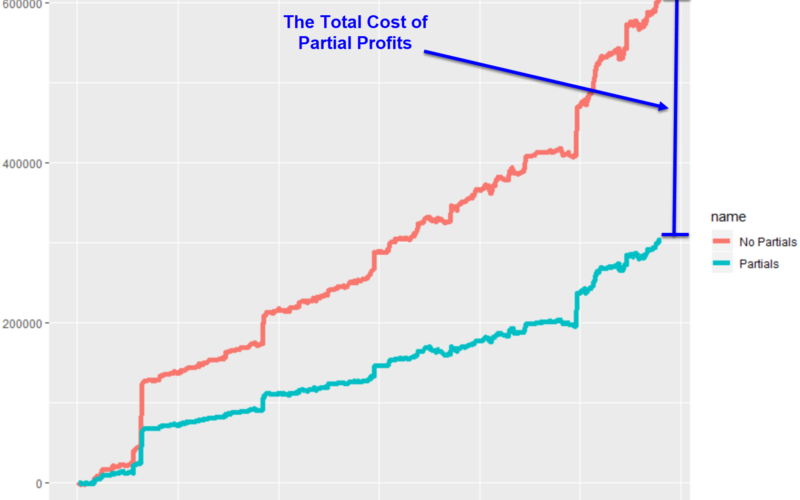
Source: Dave Mabe – Should you EVER take Partials?
Adjusting risk parameters
Another thing that traders often do is reducing size during losing streaks and increasing size during winning streaks.
If you remember looking at different equity curves, you might have realized that markets give you a random distribution of winners and losers.
This is why sticking to your strategy is the most important thing, as you might get poor results in 10 trades but excellent results in 500 trades.
Anyway, let’s say this is your random distribution of 10 trades.
W-W-W-L-L-L-L-W-W-W
You are risking a fixed $100 per trade with 2:1 RRR.
The distribution of profits and losses would be following.
$200 $200 $200 -$100 -$100 -$100 -$100 $200 $200 $200
Ending in a total profit of $800.
As you probably noticed, you had a string of four losses in a row during this period.
Many traders would feel insecure about this and decrease their size to half until they get at least two winners, for example.
The profit and loss distribution would be following.
$200 $200 -$100 -$100 -$100 -$100 $100 $100 $200 $200
Ending in a total profit of $600.
Similar to partial profits, this is not a favourable approach to your trading.
Instead, I recommend categorizing strategy to different setups and tracking the performance of each setup individually while setting a “stop trading trigger” on every single setup you trade.
For example, you can say that if your moving average crossover setup would experience ten losses in a row, you will stop trading it and review past performance and try to either improve it or get rid of it completely.
This is much smarter than constantly adjusting position size because you have hit a bumpy road.
Although increasing your size during winning streaks also doesn’t make much sense, you might get yourself into the situation when you trade two setups somewhat systematically as they always look the same, follow the same rules and so on.
Setup A might have a win rate of 40% with 2.5R and occurs five times a week on average.
Setup B has a win rate of 80% with 3R and occurs two times a month on average.
Should your risk be the same % or dollar amount on these setups? Not really.
Of course, don’t go all-in on setup B, but if you find out that setup B occurs during very favourable market conditions where you can step in with confidence, you should put more risk behind it.
Just don’t go too crazy.
Breakevens
Most of us are technical traders.
We use price action, orderflow, indicators and so on to determine our entries, invalidations and take profits.
All this technical knowledge is then thrown away once we move our stop-loss to the least technical level in the trade, which is just a random price point of entry and has nothing to do with the invalidation of our trade.
Breakeven is the same thing as partial profit; it’s a psychological comfort blanket that reassures us that we “beat” the market today and we won’t leave our desks mad after losing money.

This is one of the most common examples of ruined trade which I’m 100% happened to you in the past.
You are getting on a level of support targeting the next level of resistance; nothing complicated.
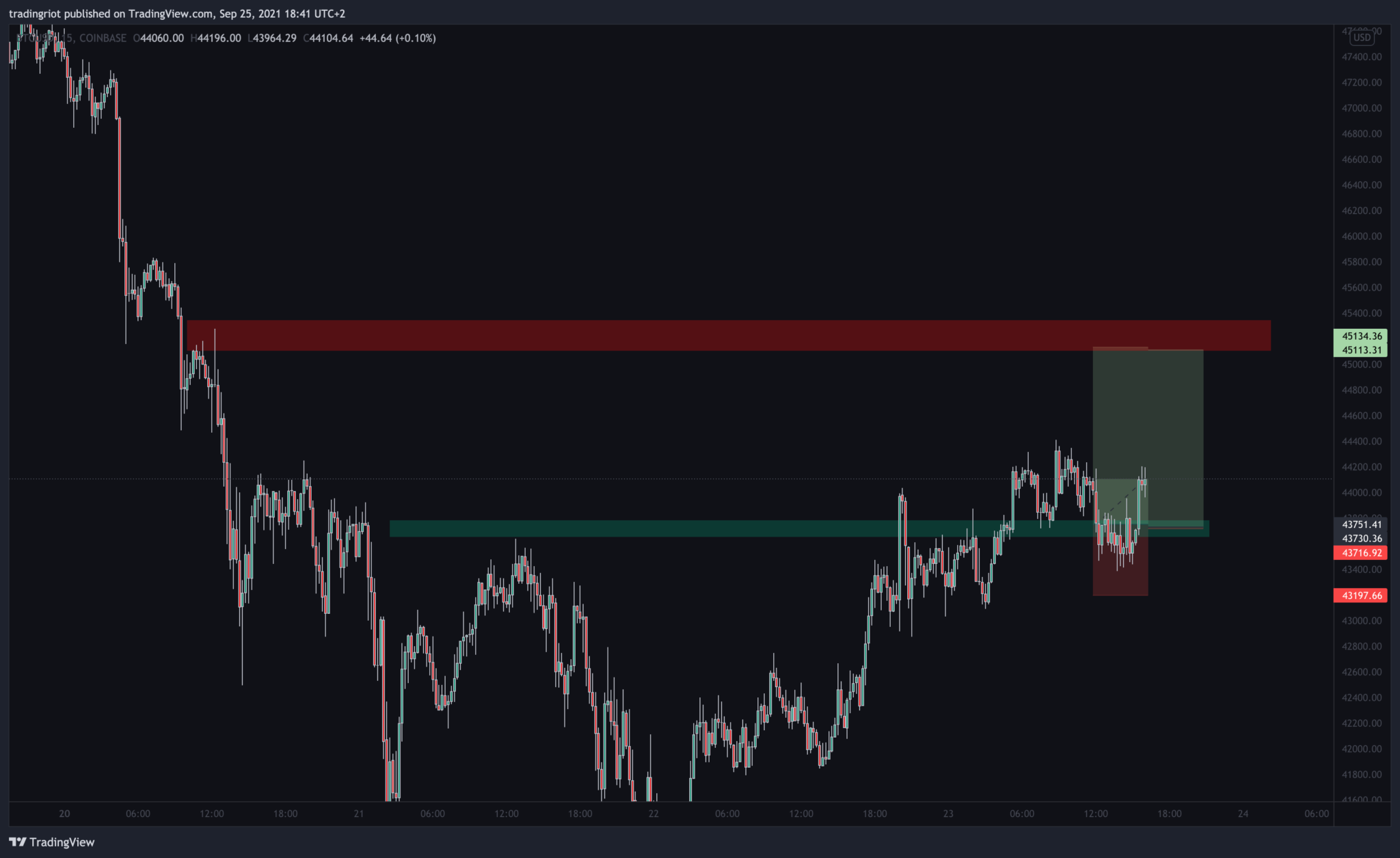
After getting into the trade, the market instantly squeezes you; after some time sitting at drawdown and being nervous of possible loss, we finally push higher.
This is the point where you move your stop-loss to breakeven as you don’t want to experience this discomfort of losing money again.
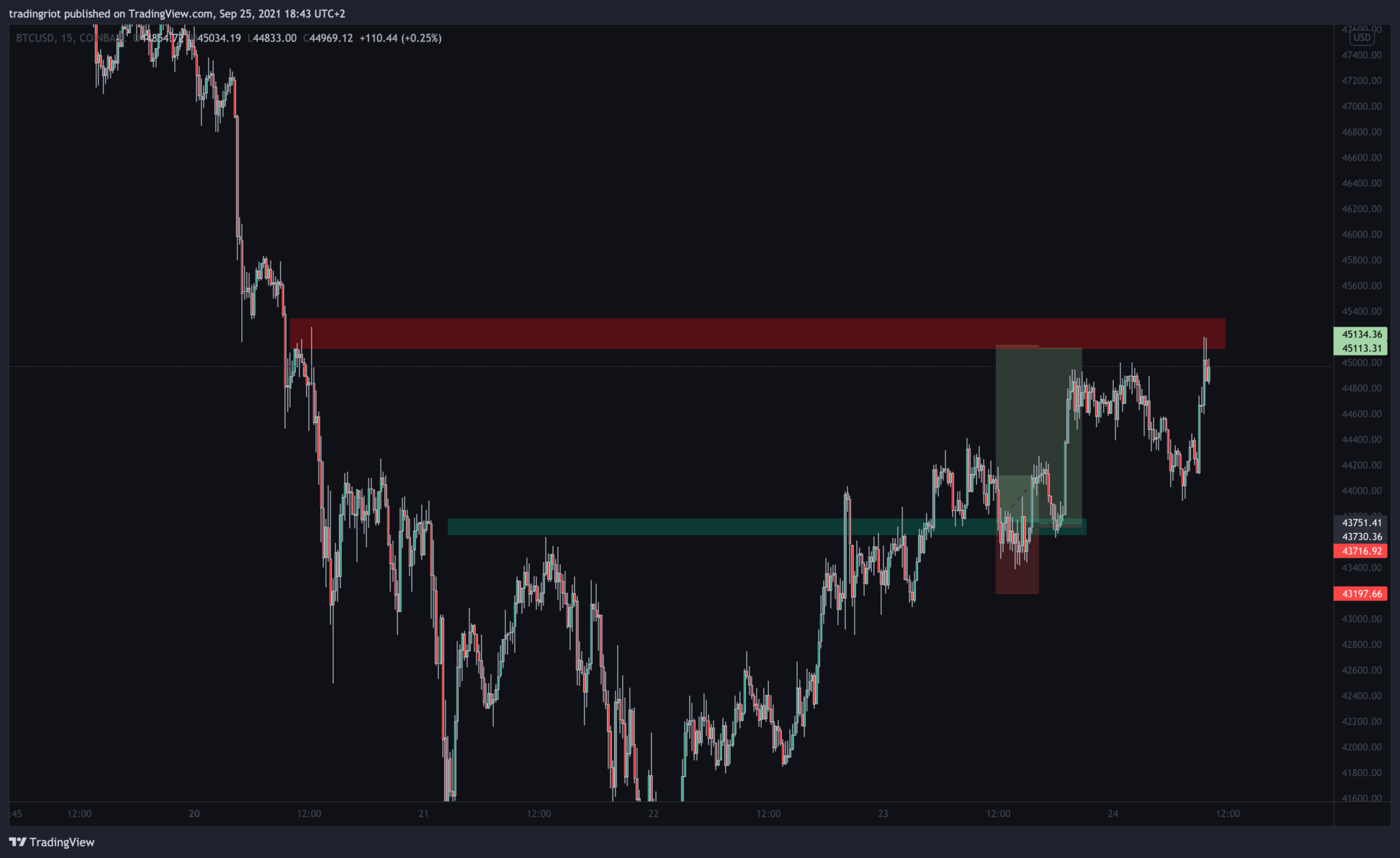
The market immediately returns to your entry, taking you out for breakeven and rushing to the target.
Was your trade invalidated because you got out for breakeven?
No, you were just scared of losing money.
What you should do instead is moving your stop loss based on your strategy and invalidation.
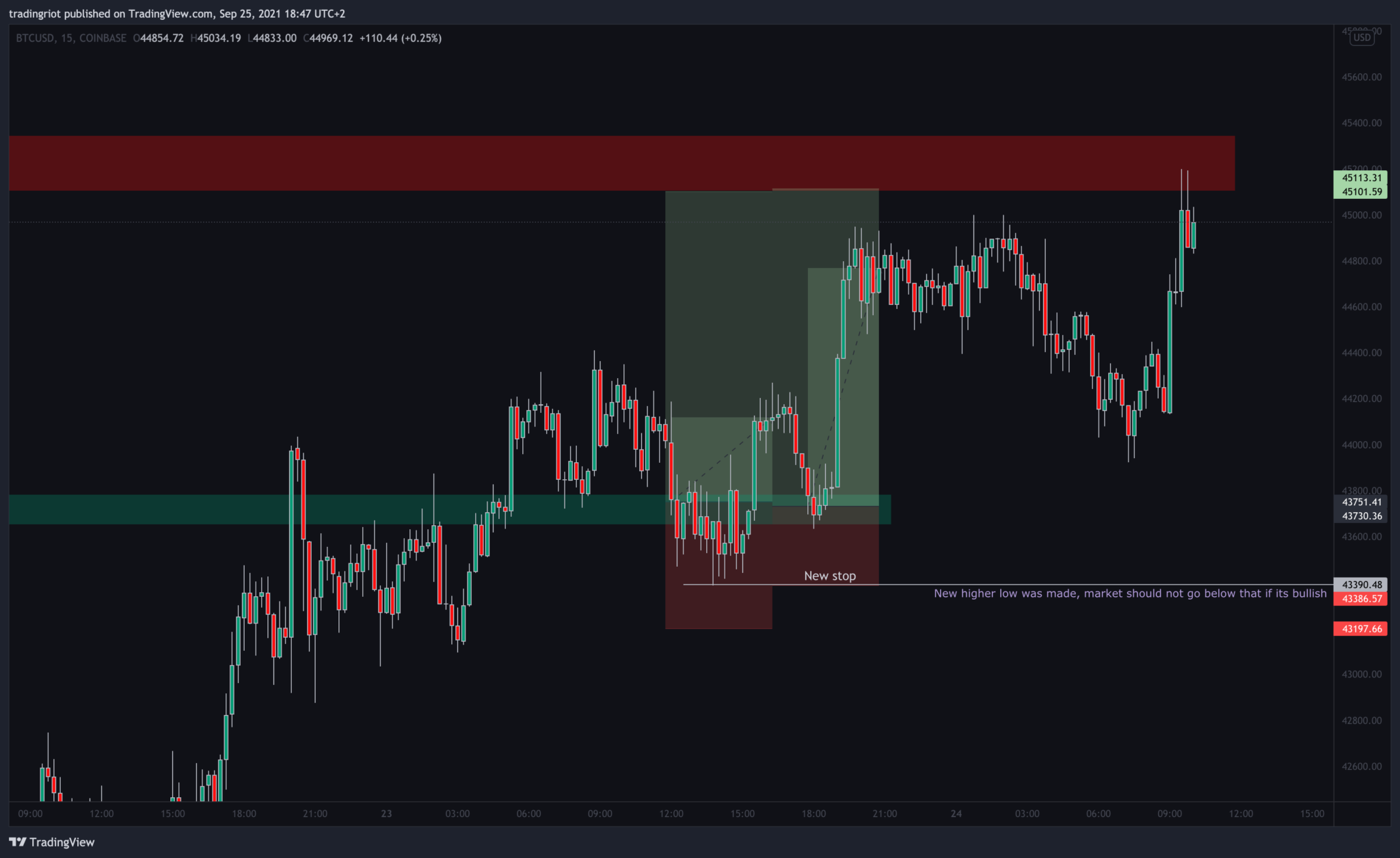
On this chart, we can also see one great concept called Evolving R, and it was introduced to me by Tom Dante.
Evolving R
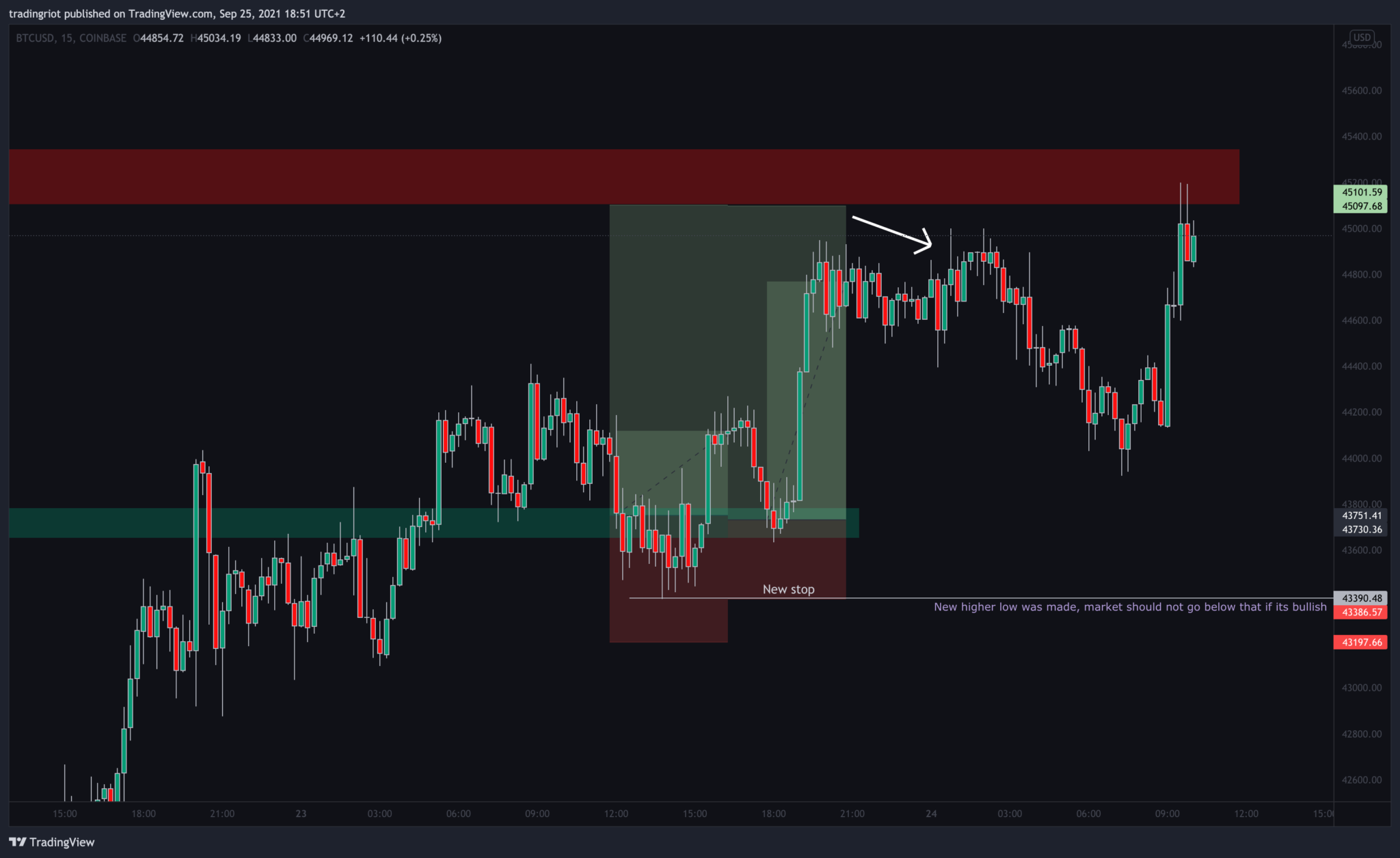
Looking at the arrow on the chart, you can see you are approximately 80% to your take profit, but the market is starting to struggle.
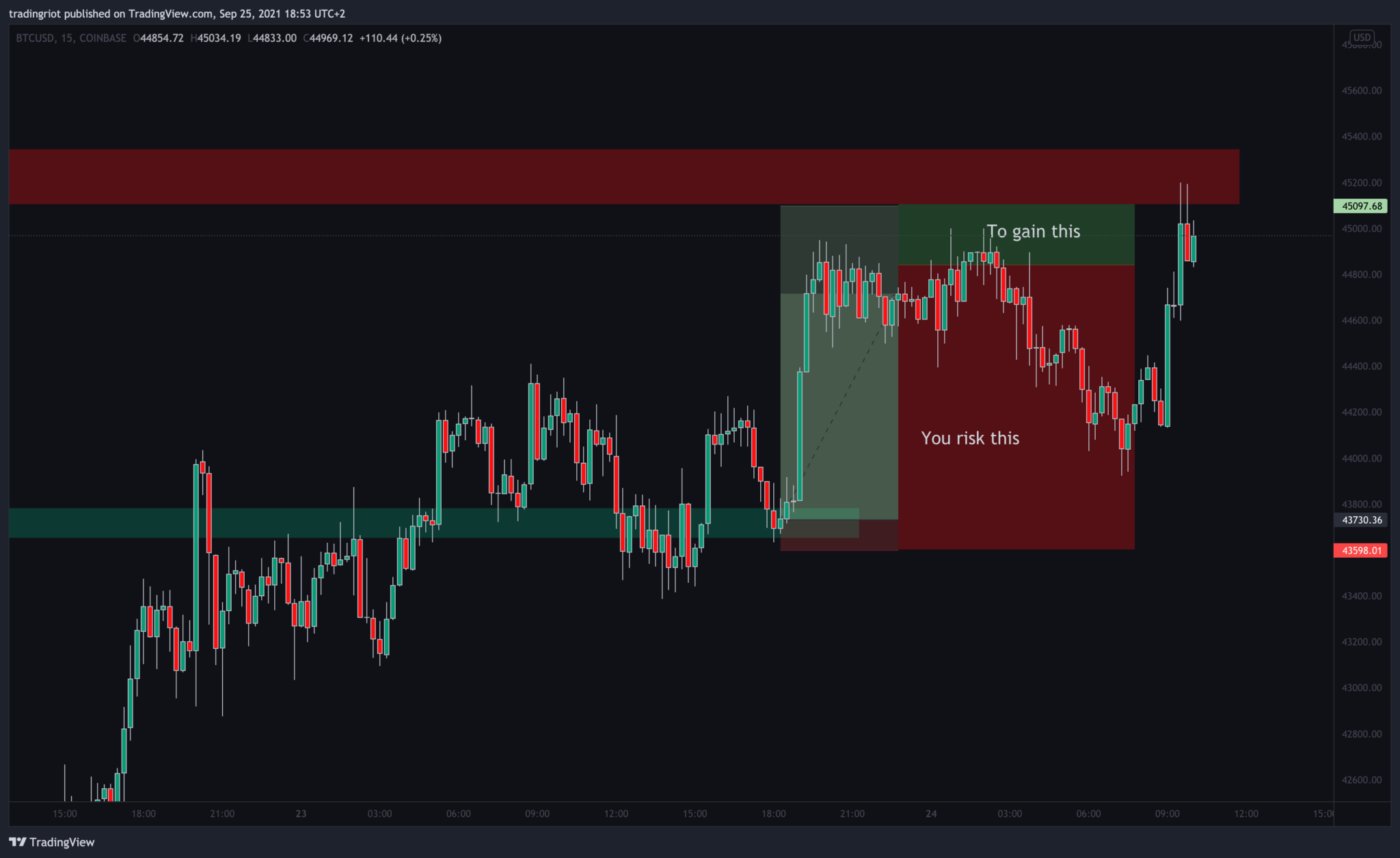
Since we moved higher, your invalidation on trade also moved higher, but it’s still just below your entry.
It means that if the market would turn just a few Dollars before your take profit and take you out, you would not only lose a small amount of money on the stop-loss but also give back all the unrealized profit.
This is why it can be very beneficial to close the trade and miss that last small amount of gains instead of risking giving it all back.
I look at the orderflow, which can give signals of tables turning.
Leverage
In the trading industry, when things go wrong, leverage always takes the blame.
Retail traders blowing accounts left, and right is always because of leverage instead of poor risk management and greed.
So what is leverage?
Leverage is tied with margin.
Margin is the money you get borrowed from a broker to open bigger position sizes.
You will often see 1:10, 1:30, 1:100 leverage.
If you use 1:100 leverage, you will only need $1,000 to open a $100,000 position size in Bitcoin.
The problem with this comes when the price of Bitcoin starts going against you.
Lets say Bitcoin is t $50,000 and you longed 2BTC ($100,000) using $1,000 margin.
If Bitcoin drops 1% to $49,500, your position gets liquidated, and you will lose $1,000.
Of course, a 1% move in Bitcoin is nothing unusual. These mass liquidations of retail trades were objects of many regulations and discussions in recent years, not only in crypto but also in legacy markets where all products are highly leveraged.
On the other hand, if you have working brain cells, know how to manage your risk and position your trades properly without being greedy, you will never have these problems, and you can start using leverage for your benefit.
Exchanges are doing their best to be your best friend, especially in crypto, where you have CEOs interacting with the common folk, influencers promoting collaborations and overall doing their best for you to trade there.
Also, why wouldn’t they when over 80% of retail traders lose their money and exchange makes money on them?
This is where you can use leverage to your benefit.
You should never forget that exchanges can go down instantly, especially those with fewer regulations offering questionable instruments to trade.
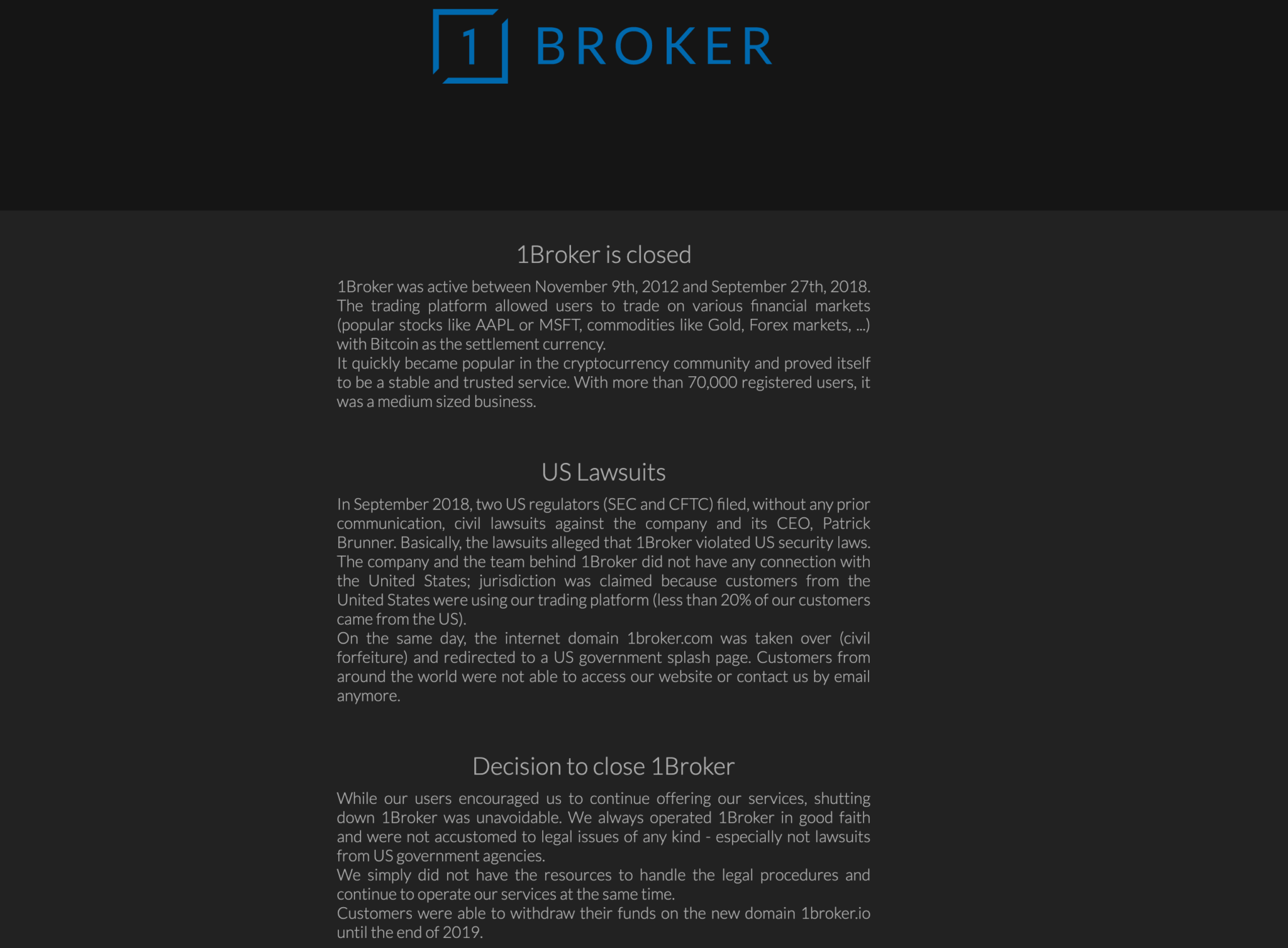
Not only that, you can, of course, get hacked, get funds stolen and so on.
But if you can use 1:30 leverage, you don’t need to have that much money on the exchange.
For example, let’s say you are trading with a $100,000 account.
If you are trading Forex, where one standard lot equals $100,000 with 1:30 leverage, you only need $3,333 in the margin to open one lot.
Thanks to this, you can keep a relatively low amount of money on the exchange.
I usually have around 20% of my account balance on the exchange; this is more than enough to cover the margin requirements, and although in the eyes of the exchange you risk 10-20% per trade, it doesn’t matter.
If the exchange goes down, it will, of course, sting to lose $20,000, but it’s much better than losing 100k.
Journaling
Throughout this whole article, you might have noticed how important it is to rely on stats as they are your guide to proper risk allocation.
I covered my favourite journals in this article.
To quickly recap what metrics are important to journal, they are:
- Instrument
- Trading Setup
- Entry/Exit/Stop Prices/R: R and PnL
- Maximum Adverse Excursion (MAE)
- Maximum Favorable Excursion (MFE)
- Screenshot of your trading setup
Journaling is not fun, especially on losing days. The last thing you want to do is to sit down a relive the moments when you screwed up, but it’s worth it.
One of my favourite things to do during times of bad period is to go through my journal and look at my profitable trades to compare them with current losing trades to find out if I make any mistakes or I’m just in unfavourable market conditions.
Also, journaling won’t be the same for everyone.
If you are a scalper and take more than ten trades in a single session, you would lose your mind journaling all of them.
One of the huge advantages of some journals that I mentioned in the article is they have automatic trade imports via API or broker statements; this way, you will gather data without manually putting the trades in.
If you are scalping, I would recommend you record your screen while trading and journaling days as a whole, how you performed, how you felt and so on, as intraday scalping tends to be more of a discretionary approach.
Make routine with journaling, screenshot every trade once it’s done with annotations and journal it.
I journal my trades on Wednesday and Saturday but find whatever works for you.
Building a small account
So now you know most things about risk management, and you are ready to trade, but you don’t have much money.
When people ask me, I usually say that trading with proper risk management is not worth with less than a $10,000 account or at least $100 risk per trade.
It can be a harsh truth because most people can only afford to start with $2,000 or $5,000 accounts swing trading while having regular jobs.
Risking 3% on $2,000 equals $60 risk per trade; this will result in a tendency of over-risking as you will see some results, but they will simply not be enough.
Although you often find crazy stories online, building an account with fixed and conservative percentage risk per trade takes time.
Instead, you should risk a fixed amount of $ or contract size per trade, which is slightly higher.
Once again, all of this has to be backed with some experience; if you are new, you can trade demo or just put a really small amount of money and risk 1-2% per trade for a couple of months to gather the data.
Gather the data part is extremely important here because you will know your stats, how many consecutive losses you can experience, and your risk of ruining the account.
If you have this data, anything between 3-6 months is of profitability is optimal; you can apply this fixed ratio risk management.
This is something I read years ago on the Financial spread bet blog, and you can learn more about it there.
To make a long story short, you set a fixed $ or contract amount as a risk for each trade and increase it once you increase your account by a certain size.
Putting this to practise, let’s say you start day trading Emini S&P500 futures with a $5000 account, and you are trading one contract.
Your average stop size is 3 points which equal $150 or 3%.
Of course, this is a little bit high for day trading, but since you are backed with data and journaling your trades, you know that the risk for running this account to 0 is very small.
If you manage to make this work, you will only need 3-4R to make 10% an account gain.
This way, you can double your account rather quickly.
Once you double the account, you will also double your trade size to 2 contracts.
So now you risk $300 per trade on a $10,000 account, still a little bit too much for day trading, but it’s nothing crazy, and it is built upon what you gained, which will boost your psychology as you make that money.
You can keep doing this until you feel like you have sufficient capital to risk only that desired 1-2% per trade.
I can’t stress enough how important it is to know what you are doing and being 100% confident in your trades.
You can achieve this with backtesting but usually, backtest give overpromising results compared to real trading.
Trading Psychology
I feel like this post wouldn’t be complete without few words about trading psychology, as this is something so many people rely on and usually blame when they lose money.
We as human beings can be quite complex, and I can’t speak for everyone only from personal experience.
Since I have been doing this for a while, I had a period when I used to read some books about trading psychology, listen to podcasts, meditate, etc.
Without a doubt, all of these things can be beneficial, but I never found any real help with trading.
If you wake up and meditate for 20 minutes every day, you might become less of a pain in the butt for your closed one, but trading is about clicking buttons, not sitting quite in the corner.
Everything you think is fault on your bad psychology is usually caused but not enough screen time and experience.
We live in crazy times where everyone is an internet millionaire (expanded more in this article), but trading is all about hard work, screen time and sticking to your rules no matter what people online tell you.
As I don’t want to get too opinionated against trading psychology, I know most new traders tend to lean to it instead of watching charts and trading.
This, in my opinion, is a huge mistake as the most experience you can ever get is gained from participating in markets, not courses, books or podcasts.
Preparing to trade
One of the best things I ever read about trading is:
Every day you start at zero.
It doesn’t matter if you lost or made money yesterday, it’s a new day, and you need to focus on that instead of your prior wins or losses.
What is extremely helpful for me is prepare in the morning or the prior day.
It doesn’t take much time, and there are templates online to make it easier for you, like this one from Edgewonk.
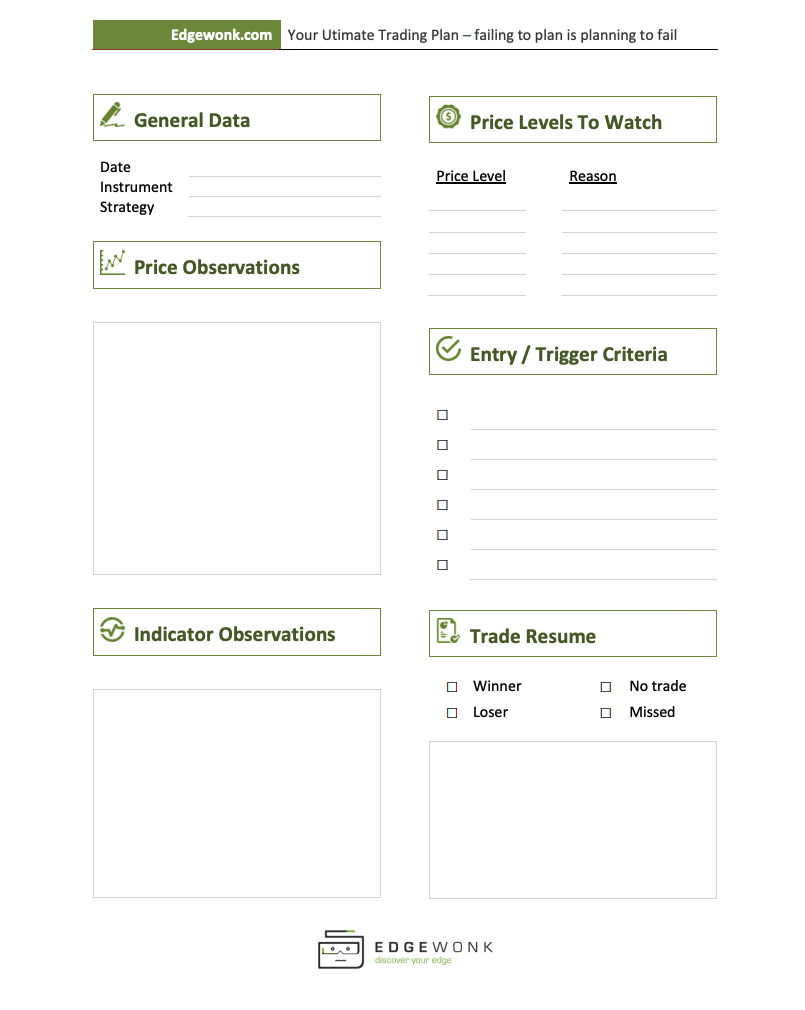
Also, there is one from Tom Dante on his website.
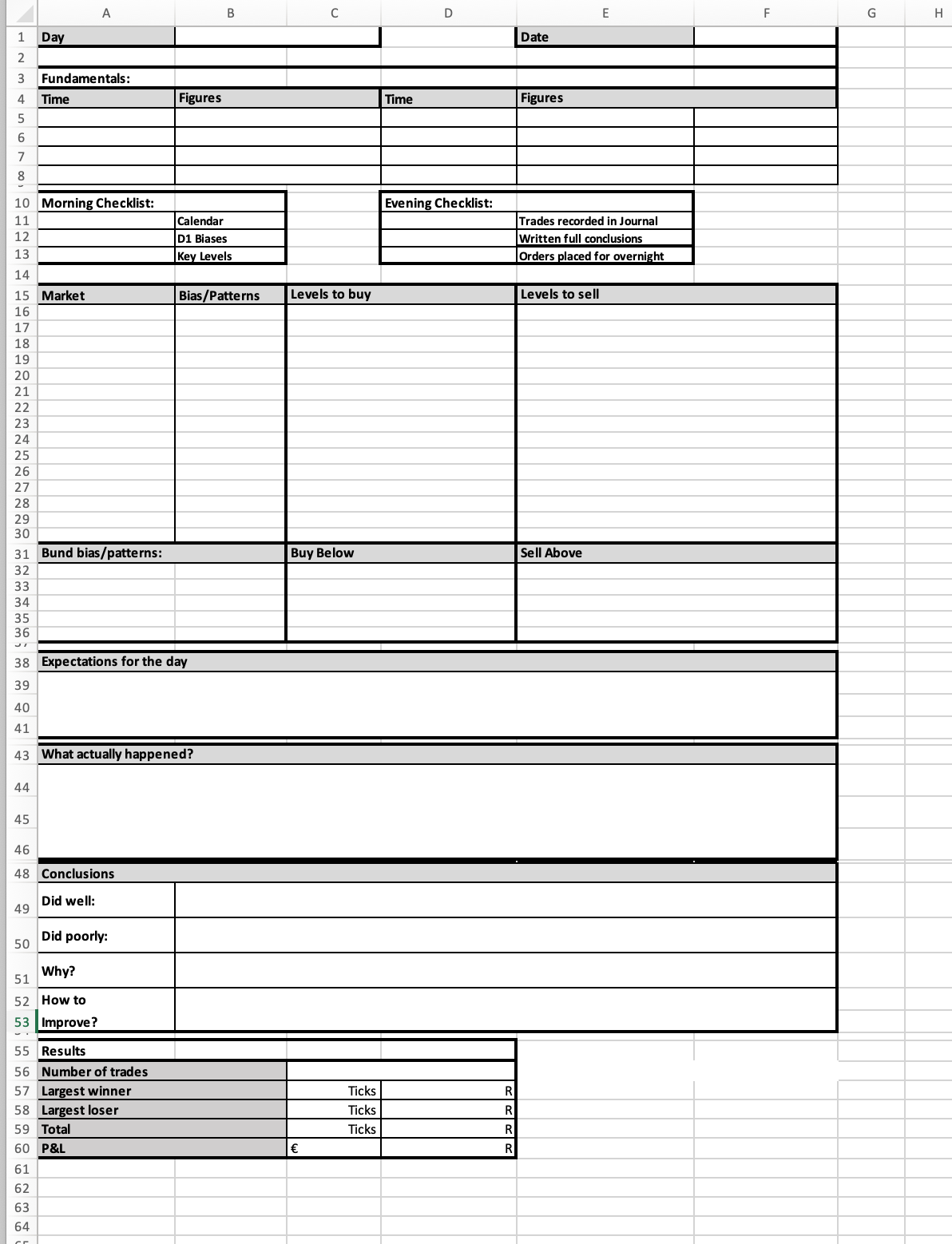
At the end of the day, it doesn’t matter how you do it; it’s up to you.
I use an app called Notion for my daily preparation.
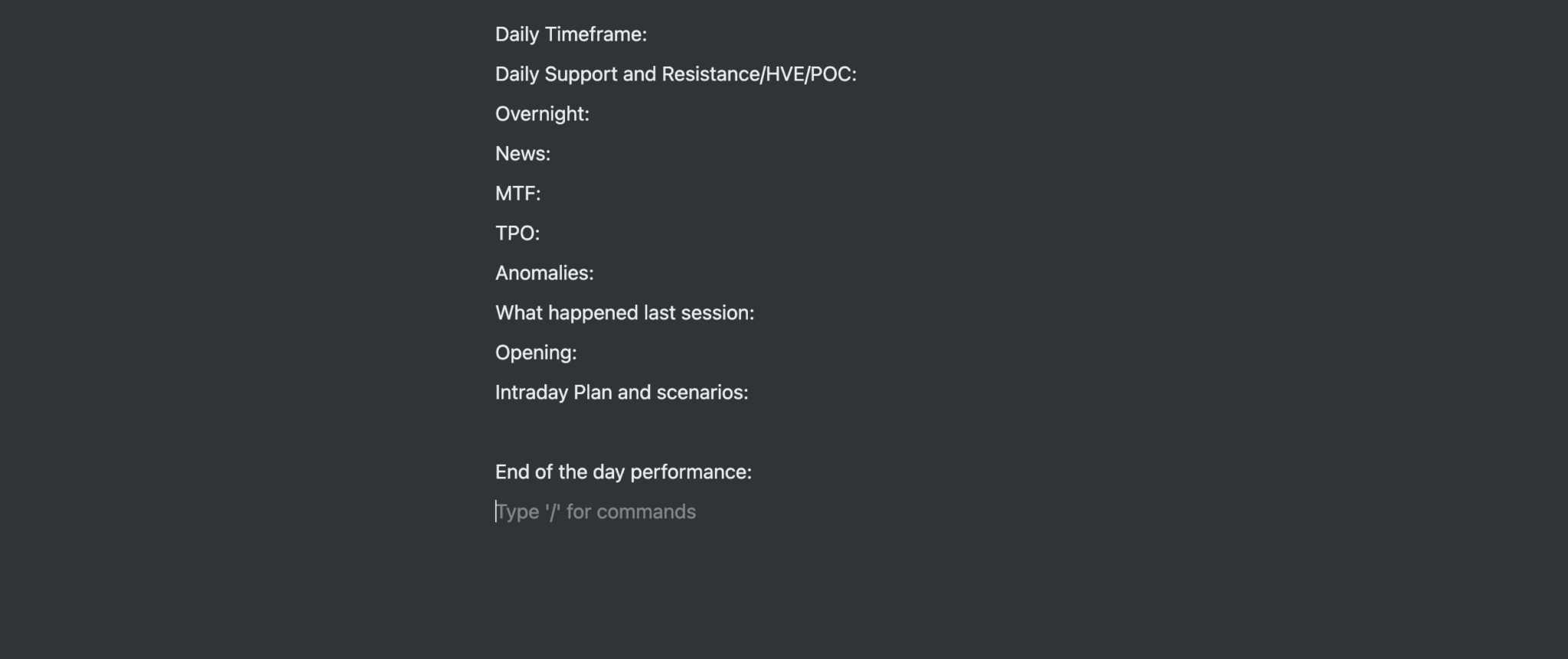
At the end of the day, it doesn’t matter how you will do it, but what you will find out after you make it a habit is that you start to remember what markets are doing and come well prepared for every trading session.
Once again, this might be more suited for day trading; if you are a swing trader and only take a couple of trades a week/month, your preparation might be more focused on setting alerts/placing limit orders and so on.
Conclusion
Risk management is simple yet can be very discretionary and complex.
I hope I covered the core concepts and things that you won’t find in conventional wisdom.
We are all different with our lifestyles, account balances and approach to trading.
Therefore there is no right or wrong answer to how to manage risk properly.
You very often hear that trading is not a sprint but a marathon.
This is true, but I would prefer to say that trading is all about gathering data and build confidence in what you are doing through screen time.
Your job as a trader is to show up tomorrow; there might be no tomorrow if you bet the house.
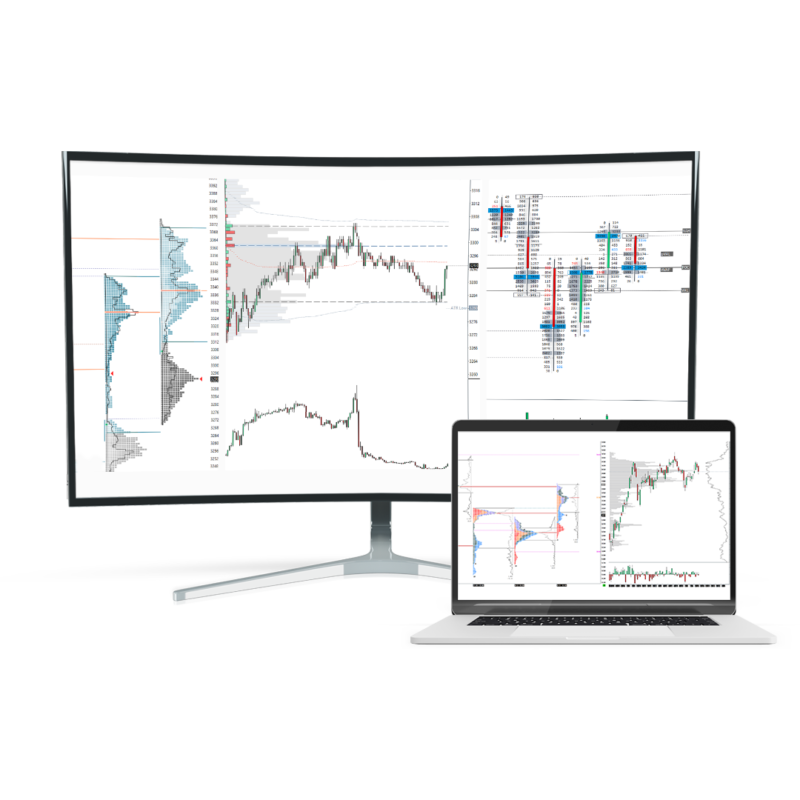

cenobar
wow, bravo adam
Yax
Wow. This is one of the best things I have read on trading. It is so real and honest written in a way to make you really reflect.
Sergey
Seriously great article.
Funkotic
Brilliant
tfy
Great article as always.
Emilio
Excellent content! Grateful to have read it.
Soko See
Love it! Never thought to use leverage as a means to de-risk capital on exchanges. Thanks Adam!
SALIMSAS
GREAT ARTICLE